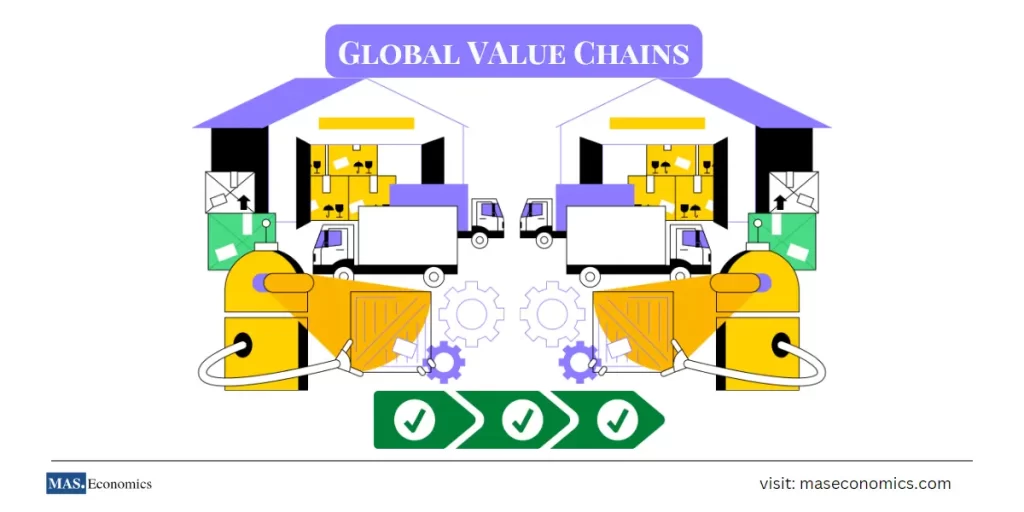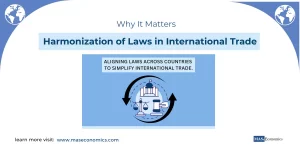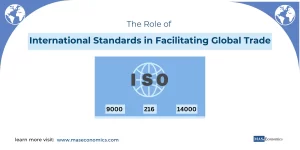Global value chains are networks of interconnected activities that enable the delivery of a product or service from its raw materials stage to the customer. Technological developments such as better transportation, communication, and information systems have enabled companies to coordinate production and distribution more efficiently across multiple countries to meet global demand.
Digital technology has greatly influenced Global Value Chains (GVCs), revolutionizing how products and services are designed, manufactured, and distributed. We will investigate the advantages and difficulties created by digital technology in GVCs, as well as analyze how it has changed the apparel industry as an example.
The growth of digital technology in GVCs:
The utilization of digital technology in GVCs has come with numerous advantages, such as improved efficiency, customized products, access to new markets, job creation, enhanced communication, increased competitiveness, and more significant innovation.
The growth of digital technology in global value chains (GVCs) has brought numerous benefits, including:
- Digital technology has facilitated better coordination of production and distribution between countries, resulting in greater efficiency and cost savings.
- By using cutting-edge technologies such as Artificial Intelligence (AI) and the Internet of Things (IoT), firms can customize their offerings for specific customers, leading to heightened customer satisfaction.
- Digital innovation has enabled companies to access a broader market via e-commerce portals and other online avenues. This accessibility allows firms to reach new customers and gives consumers access to a greater selection of goods and services.
- Digital technology advances in global value chains have created job opportunities in the tech industry as well as in industries dependent on digital technology.
- Digital technology has facilitated improved communication between companies, suppliers, customers, and other stakeholders. This improved dialogue has increased transparency and accountability amongst all parties.
- Through the utilization of digital technology, firms are able to increase their competitiveness by cutting costs and becoming more efficient.
- Digital technology has enabled innovative services and products to emerge, thus enhancing global economic innovation.
Nevertheless, it has also introduced challenges that must be resolved.
Challenges of using digital technology in GVCs
Digital technology poses a threat to income equality and can be used to exploit workers. An example of this is the gig economy, where employees are hired for short-term or freelance jobs without the safety net that traditional employment provides. This puts job security and wages at risk.
Digital technology can be used to transfer data and intellectual property from developing countries into developed countries, depriving developing nations of the economic advantages of their inventions and increasing the disparity between those with access to advanced technologies and those without. Moreover, integrating digital tools in GVCs raises issues concerning cyber security, as companies using these platforms become vulnerable to data breaches and cyber attacks that can detrimentally affect both companies and consumers.
Despite the advantages of the digital revolution in GVCs, these challenges must be addressed in order to share the gains more equitably and mitigate any potential drawbacks. This may involve introducing regulations for the gig economy, upholding intellectual property rights, and reinforcing cybersecurity measures.
The impact of digital technology on the apparel industry
With digital technology transforming GVCs, the apparel industry has experienced significant changes. From design to production and distribution, advances in automated systems have allowed for faster production cycles and reduced labor costs.
Designers now have access to computer-aided design (CAD) software that enables them to create and modify designs quickly and easily. Companies can also find suppliers more efficiently with the help of digital platforms, negating the need for personally sourcing materials. Automation has also played an essential role in reducing manual labor and increasing production speeds, as exemplified by the use of sewing robots.
The increased efficiency enabled by digital technology brings many benefits to the apparel industry, such as cost savings, higher levels of customization for customers, and improved customer experience overall. However, these technological advancements present challenges, such as potential job displacement and the need for workers to upskill themselves to remain competitive in a changing landscape.
Creating Resilient GVCs
In the years to come, global value chains will likely be more complex and unpredictable. Companies need to take proactive steps toward strengthening these networks for faster and better reactions to possible disruptions.
To build resiliency into GVCs, identifying potential risks and vulnerabilities is essential. Companies must analyze the present climate, including global trade patterns, political circumstances, and digital innovation, in order to identify any possible dangers. Understanding these potential issues will help organizations be ready for any unexpected alterations or disruptions.
Once potential risks have been identified, In order to reduce the chances of disruption in GVCs, firms can take proactive actions like diversifying sources of supply, monitoring supplier performance, and staying in communication with suppliers. Additionally, forming positive relationships with key suppliers guarantees that all parties know their responsibilities and can communicate efficiently during a crisis.
To make GVCs more visible and secure, businesses should assess investing in technologies like blockchain. This system provides many advantages, such as secure data exchange between various members of a supply chain network, enhanced collaboration among all involved parties, and increased transparency throughout the industry. The decentralized nature of blockchain allows for secure records to be created that can be monitored continuously across multiple points in the chain without infringing on security or privacy.
To build resiliency, companies can use data analytics tools to make smarter decisions about how they source items, manage inventory, and allocate resources. By taking advantage of predictive analytics, businesses can find the most cost-effective solutions while upholding quality measures, thus increasing performance and revenue while decreasing risk exposure.
There is no silver bullet for fortifying GVCs. However, by taking proactive action to implement risk management practices through technology and increased collaboration with other players along the chain, companies can create a durable structure capable of withstanding external pressures without incurring significant financial losses. This strategy will allow smaller players to stay competitive in a volatile global marketplace come 2023.




